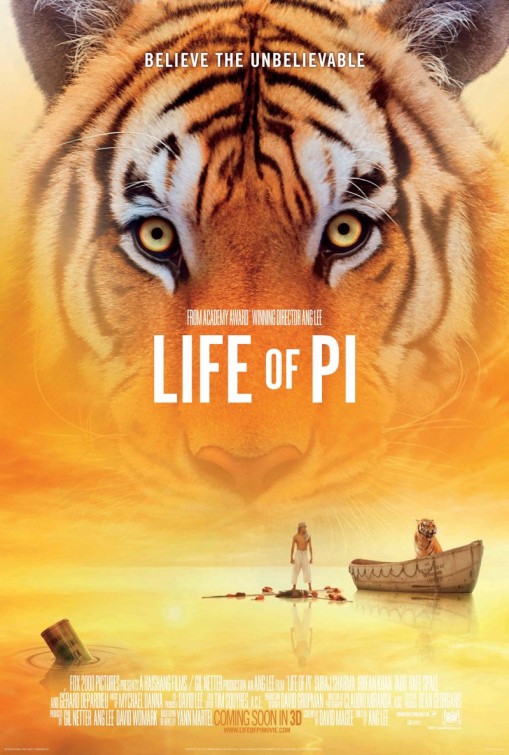Life of Pi, review of the classic movie by Ang Lee

Have you seen it? Add your rating here
Life of Pi, the movie, was released in late 2012, and was adapted from the Man Booker Prize-winning novel of the same name by Canadian author Yann Martel. The film has been nominated for several Golden Globe awards and is being hailed as a "visual masterpiece" and "one of the best films of the year".
This was an ambitious project for director Ang Lee (best known for Crouching Tiger, Hidden Dragon and Brokeback Mountain). Many said this story could not be filmed, given the technical difficulties of working with dangerous animals, but Lee appears to have pulled it off with style and finesse - and a little CGI magic.
Synopsis
The story follows the adventures of a young Indian boy, known as Pi. Having grown up in a zoo in India, his life is turned upside down when his family decide to emigrate to Canada. Leaving behind everything they know, the family set off on an ocean voyage towards their new life, along with several of their animals from the zoo, which are being sold and exported to the Americas. However, after a violent storm resulting in a dramatic shipwreck Pi finds himself adrift on a lifeboat with an injured zebra, a hyena and a ferocious Bengal tiger named Richard Parker. The scene is set for an incredible story of survival. The story explores the instinct to survive, the agony of loss, the moral dilemmas and the role of faith in Pi's amazing journey.
The book
The Movie
The movie is exquisitely shot, starting with beautifully filmed scenes of Pi's childhood in India, depicting the vibrant colours and lively people of his native land. The animal shots move seamlessly between live action and CGI - obviously you could not use a real tiger in this movie, but the special effects are superb and totally convincing. Some of the ocean scenes are utterly breathtaking, for instance a school of flying fish that shoot across the lifeboat, a night-time scene of glowing jellyfish under a vast starlit sky and a leaping whale all stand out as memorable visual treats.
The leading actor is Suraj Sharma, and considering he was an unknown with no previous acting experience, his performance as the 16 year old Pi is fantastic. His portrayal of the anguish and suffering of a boy who has lost everything is heart-breaking, and is a credit to the director. Much of the story is told retrospectively by the adult Pi (played by Irrfan Khan), who is now living in Canada and retelling the story in an interview with an aspiring novelist.
The film is available in both 2D and 3D. While I only watched it in 2D it was still visually very rich and totally absorbing, although I can see that the 3D version would probably add another level of immersion. Some scenes are quite disturbing, and although rated as a PG (parental guidance advised), in my opinion it is not really suitable for young children.
It is often said that films of books that you have read are disappointing. When reading a book we create our own visual images of characters and scenes, we have imagined how people speak and what the scenery looks like - a film will nearly always be different to what we have imagined, Directors usually like to put their own slant on a story, and will miss things out that we may have felt were an important part of the story, leaving us feeling that something has been lost. Life of Pi, however, captured the essence of the book very well. While small parts of the story were left out, the plot and dialogue remains very true to the book, and in some ways the beauty of the filming adds to the rich visual imagery that we may have pictured in our mind's eye. The spiritual message of the story is also conveyed particularly well, without being overdone. I would say that the film is a very successful retelling of the book.
I would have no hesitation in recommending this film to anyone who loves a great story and beautiful cinematography, whether they have read the book or not.









